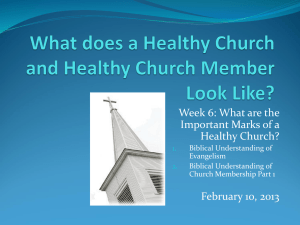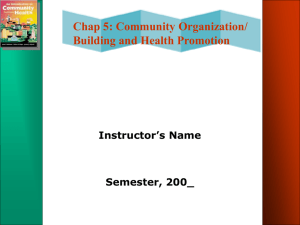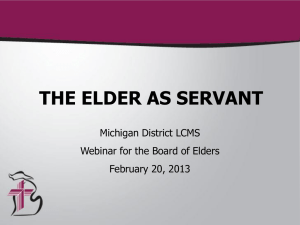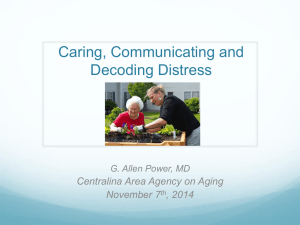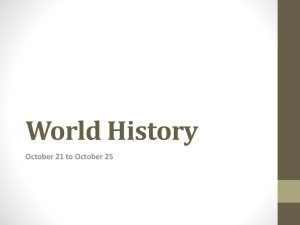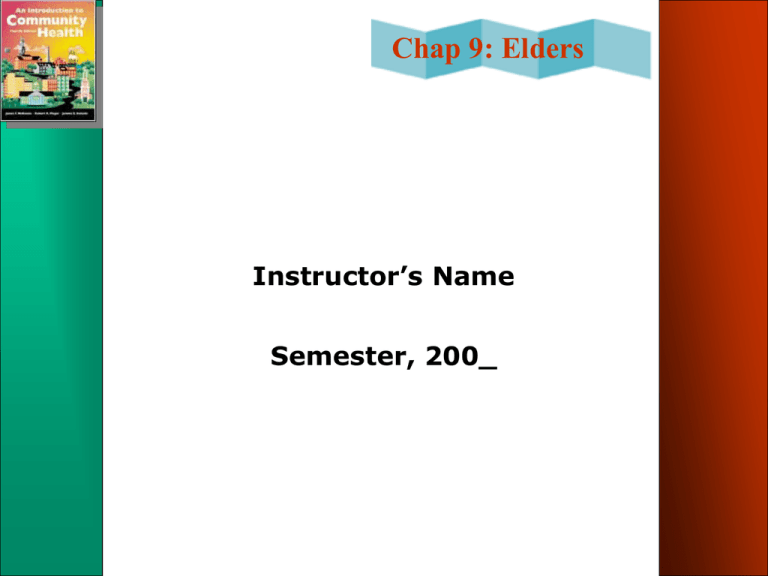
Chap 9: Elders
Instructor’s Name
Semester, 200_
Chap 9: Elders
Chapter Objectives
• Identify the signs of an aging
population.
• Define the following groups-old,
young old, old old, and oldest old.
• Define the terms aged, aging,
elders, gerontology, and geriatrics.
• State several commonly held myths
about the senior population.
• Explain the meaning of an agepyramid.
Chap 9: Elders
Chapter Objectives
• List the factors that affect the size
and age of a population.
• Define fertility and mortality rates
and explain how they impact life
expectancy.
• Explain the difference between
support and labor-force ratios.
• Briefly outline elder abuse and
neglect in the United States.
Chap 9: Elders
Chapter Objectives
• Describe the typical elder, with
regard to martial status, living
arrangements, racial and ethnic
background, economic status, and
geographic location.
• Identify the six instrumental needs
of elders.
• Briefly summarize the Older
Americans Act of 1965.
Chap 9: Elders
Chapter Objectives
• List the services provided for elders
in most communities.
• Explain the difference between
respite care and adult day care.
• Identify the four different levels of
tasks with which elderly need
assistance.
Chap 9: Elders
Definitions
• Aged
– state of being old
• Aging
– changes that occur as living things grow
older
• Gerontology
– study of aging
• Geriatrics
– medical practice specializing in treatment of
the aged
Chap 9: Elders
Myths of Aging
• Myth:
– “After age 65, life goes steadily downhill.”
• Truth:
– There is no magic age that defines the
boundary between healthy middle age and
total decrepitude.
Chap 9: Elders
Myths of Aging
• Myth:
– “Old people are all alike.”
• Truth:
– There are more differences among seniors
than any other segment of the U.S.
population.
Chap 9: Elders
Myths of Aging
• Myth:
– “Old people are lonely and ignored by their
families.”
• Truth:
– Seniors are the least likely to be lonely of
any age group; and those who live alone are
likely to be in close contact, either in person
or by telephone, with close friends and/or
their children.
Chap 9: Elders
Myths of Aging
• Myth:
– “Old people are senile.”
• Truth:
– Senility is the result of disease and only
affects about 5% of seniors living in
noninstitutional settings.
Chap 9: Elders
Myths of Aging
• Myth:
– “Old people have a good life.”
• Truth:
– Though seniors do gain certain advantages
when they retire and when their children
leave home, they still face a number of
concerns such as loss of loved ones, loss of
health, and loss of value in society.
Chap 9: Elders
Myths of Aging
• Myth:
– “Most old people are sickly.”
• Truth:
– Most older people do have at least one
chronic health problem, but the majority of
seniors are able to live active life-styles.
Chap 9: Elders
Myths of Aging
• Myth:
– “Old people no longer have any sexual
interest or ability.”
• Truth:
– Sexual interest does not diminish with age,
but there is a slight alteration in sexual
response. Nonetheless, many seniors in
reasonably good health have active and
satisfying sex lives.
Chap 9: Elders
Myths of Aging
• Myth:
– “Most old people end up in nursing homes.”
• Truth:
– Only approximately 6% of those above the
age of 65 live in nursing homes. While that
% jumps to 25% for the oldest old, (85 &
over) it is still well below half.
Chap 9: Elders
Myths of Aging
• Myth:
– “Older people are unproductive.”
• Truth:
– There is no consistent pattern to show
superior productivity in any age group.
Chap 9: Elders
Demography of Aging
• Size & Growth
• Factors which affect population size
& age
– fertility rates
– mortality rates
– migration
Chap 9: Elders
Support & Labor-Force
Ratios
• Support ratio
– comparison between society’s unproductive
and productive individuals
– total support ratio youth support ratio
– elderly support ratio
• Labor-force support ratio
– based upon the number who are actually
working
Chap 9: Elders
Demography of Aging
•
•
•
•
•
Marital status & other variables
Living arrangement
Racial and Ethnic composition
Geographic Distribution
Economic Status
Chap 9: Elders
Income Sources of Seniors
Earnings
21%
Other
3%
Assets
19%
S.S.
38%
Pensions
19%
Chap 9: Elders
Housing Needs of Seniors
•
Housing
–
older homes
–
homes of lower
value
–
in need of repair
–
less likely to have
central heating and
air conditioning
–
less likely to have a
telephone
Mobile homes
Multi-
Single family
Chap 9: Elders
Health Profile of Elders
• Mortality
• Morbidity
– Chronic conditions
– Impairments
Chap 9: Elders
Health Behaviors
• Less likely
– consume large amounts of alcohol
– smoke cigarettes
– overweight or obese
• when compared to younger
counterparts
• Neglect and Abuse
Chap 9: Elders
Instrumental Needs of
Elders
• Income
• Housing
• Personal Care
• Health Care
Chap 9: Elders
Transportation Concerns of
Seniors
• Important to remain independent
• Solutions to Transportation
Problems
–
–
–
–
Fare reductions
Subsidies to mass transit
Subsidies for taxis
Funds to assist centers in purchasing
equipped vehicles
Chap 9: Elders
Community Facilities &
Services
• Meal service
– programs such as meals-on-wheels &
congregate meals
• Homemaker service
– enables elderly to remain in their own homes
• Chore & home maintenance service
• Visitor service
Chap 9: Elders
Community Facilities &
Services
• Adult day care
– provides care for seniors left alone all day
• Respite care
• Home health care
• Senior centers
• Other Services
Chap 9: Elders
Chapter 9
Seniors



